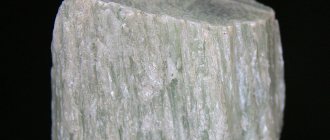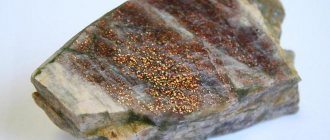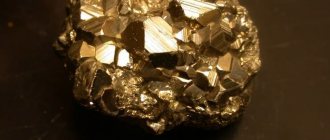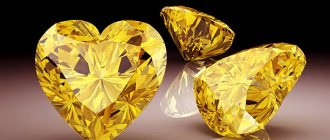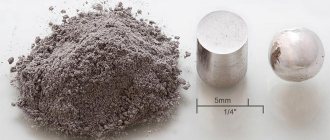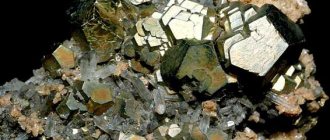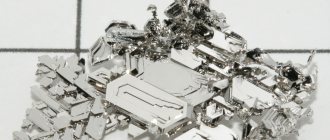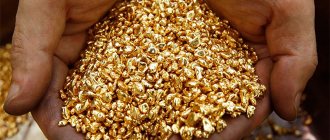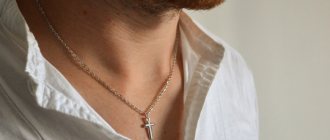The mineral called celestine is made up of strontium sulfate. The Latin term "celestis" translates as "heavenly", that is, the name of this stone indicates its delicate blue color. But there are also blue-gray, yellow and even red celestines. All of them are transparent or translucent and resemble barite in structure. Celestite is distinguished from the last, outwardly very similar mineral by the color of its flame. While calcination of barite in it produces a green tint, celestine in such conditions develops a bright crimson color.
What kind of mineral?
Celestine mineral has been known to mankind since the 18th century. That's when he was found in Sicily. The Italians gave the name to the stone based on the pale blue color of the crystal. Celestine from the Latin caelestis (cealistis) means heavenly, divine. Italians are also given this name, then the word takes on the meaning of “messenger of the Almighty, angel.” As a common noun, it can be used as a nickname for a child.
Helpful information
Even in ancient times, celestine was often used to decorate ritual objects of Catholicism or to decorate the vestments of clergy. In the 19th and 20th centuries, crystal began to appear in the jewelry of noble people.
This is how the mineral took its place of honor in the jewelry industry.
Prices
Celestine in silver
You can rarely find jewelry with this stone on the stone market. Most often, collectible crystals or interior items are sold. The average price for products with stone varies within the following limits:
- up to $700 - for a processed crystal in silver weighing up to 100 g;
- $200-300 - for a souvenir ball weighing up to 2 kg;
- $10-20 for a celestite bracelet;
- $50-100 – for a raw celestine crystal weighing up to 500 g.
Where is it mined and how is it processed?
Since the large-scale use of celestite stone began quite recently, many deposits of this rock remain today. Crystals are spread throughout the earth. Particularly large deposits are considered:
- on the island of Madagascar: samples of a soft blue hue predominate there;
- unique soft orange crystals can be found in the Tula region and Perm region;
- Transparent minerals are mined in Austria;
- The purest stones without impurities come to the jewelry market from Italy and England;
- in the USA, deposits are being developed in California, Pennsylvania, Michigan and Ontario;
- high-quality celestines are stored in natural treasuries of the Free State of Saxony and the Spanish provinces;
- Turkmenistan gives the world specimens of reddish-brown shades.
Blue Angel
Blue crystals were first mined in Sicily in the 18th century. Celestine mineral is found in cracks and voids in rocks, called geodes. The crystals are shaped like prisms and columns within the rock, and thick plates, crust-like, when found on the surface. They are large - about 50 cm.
Strontium sulfate is found in limestones, dolomites, and gypsum. There are deposits of the celestine mineral in Germany, Canada, Italy (Sicily), Austria (Salzburg), Great Britain, the USA, Russia (Volga region, Southern Urals), Mexico, Madagascar, South Africa, Tajikistan (Shurab), Iran, China, Turkey.
The largest Crystal Cave geode is located near the village of Put-in-Bay in Ohio, USA . It is practically selected and equipped for excursions. But among the crystals remaining here there are giants up to 1 m long.
Sometimes you come across two-color crystals. For example, in Texas, white stones with blue tips are found, and brown ones often have an admixture of yellow or red.
Today, strontium is not mined in Russia, although some deposits are very promising: Mazuevskoye, Tabolsk deposit (Tula region), Blue Stones (Dagestan). There are deposits in the Arkhangelsk region (Pinega river valley), the Volga region (Vodinskoye, with native sulfur), on the Mangyshlak (Ungozya) peninsula, in Buryatia, Tyva, and Yakutia. Since celestite is a sedimentary rock, the mineral is often found on the seabed.
The most beautiful specimens are found in China in the Yangtze River valley, in the Three Gorges area. Legend says that once there was a piece of heaven on Earth with luxurious greenery and a clear river. But twelve demons came and destroyed the paradise, tore out the trees, threw them into the river along with stones. The Three Gorges turned into a desert and people had to leave. Fortunately, the seventh daughter of the heavenly empress found out about this. She called upon the heavenly powers for help and declared war on the demons. For seven days and nights she threw lightning at her insidious enemies until she destroyed everyone, but the Three Gorges turned into a piece of bare, melted earth. To restore its former beauty, the Virgin scattered heavenly seeds on the ashes, which instantly turned into beautiful stone flowers, and the hard worker wind applied a new layer of fertile soil. Soon the Three Gorges turned green.
The first mention in print can be dated back to 1778. In the book “The Moral Justification of Card Games; an interesting and informative story told by a man named Louis Bras-de-Fer, who served the king” there is information about strontium sulfate.
The Germans have an interesting story about how they discovered the celestine deposit.
A German migrant living in the USA, Herr Heinemann, decided to expand his winery and ordered a well to be dug. During the work, they discovered a cave, the walls of which were strewn with protruding bluish-white crystals. “I have found a treasure trove of trolls,” Heinemann thought, but then realized that German trolls do not live in America. Experts determined that it was a huge celestine geode.
Varieties
Celestine stone has many shades. Crystals of all colors of the rainbow are found throughout the world, but some are created by chance when interacting with other nearby rocks.
- transparent or white specimens are rare; during the process of their appearance they did not interact with any of the extraneous chemical elements;
- sky blue stones are among the most common;
- reddish and crimson specimens are the result of the interaction of the crystal with manganese;
- golden stones are obtained due to the large amount of strontium in the composition;
- the predominance of sulfur oxide in the crystal leads to the appearance of green or turquoise shades;
- brown or orange celestines appear due to interaction with iron.
Chemical composition
Strontium oxide (SrO) 56.42%, sulfur oxide (SO3) 43.58%. Sometimes contains Ca and Ba (often in significant quantities).
Forms an isomorphic series with barite. Intermediate members: barytocelestine, celestobarite. Sr is partially replaced by Ca (calciocelestine).
Varieties
Baritocelestine contains up to 26% BaO; calciocelestine contains a small amount of calcium, which replaces strontium.
Crystallographic characteristics
system .
Symmetry class . Rhombo-bipyramidal. V. With. V. With. 3L23PC. Space group Pnma (D162h). a0 = 8.36; b0 = 5.36; с0 = 6.84. Axle ratio. 1.561 : 1 : 1.276, Z = 4.
Properties of the mineral
During the research, scientists noticed that crystals with a rich color can have a detrimental effect on human health. Bright blue crystals often contain radioactive elements. Such specimens have strong energy, but they can be dangerous with prolonged contact.
Magical
Among the magical properties of celestine:
- Restoring karmic holes. The crystal will be able to patch up holes in the aura, as well as in the human energy field, thanks to which the owner will have more strength. The influence of others on self-esteem will decrease.
- Gift of divination. The person will find that his intuition is greatly enhanced. This will help predict how events will develop.
- The opportunity to make the right choice. In situations where you need to choose one over the other, the owner will be able to make the right decision.
Healing
Despite the danger posed by radioactive substances, the mineral has healing properties.
- Healing for chronic diseases.
- Women who used celestine noted relief and a more painless course of their critical days.
- Help with diseases of the musculoskeletal system.
- Recovery after serious illnesses and surgical interventions.
- The crystal has an analgesic effect for dislocations and fractures.
Physical
Over several centuries, scientists managed to fully study the mineral. The following physical properties were identified:
- with prolonged exposure to sunlight, the crystal turns gray;
- celestine, when exposed to fire, changes color to bright red;
- when heated to 200 degrees Celsius, the color of the stone disappears;
- glassy sheen on the surface;
- the mineral does not have high strength. Mechanical impact will cause scratches.
Chemical
Celestine is strontium sulfate, its formula is: SrSO4. The ratio of components in the composition of the stone is almost equal: SrO - 55%, SO3 - 43%. The proportion of impurities can reach 3%. Among the chemical properties of the mineral are:
- hardness on the Mohs scale - 3.7 units;
- density - 4.1 g/cm3;
- most often there are specimens with calcium and barium inclusions;
- concentrated sulfuric acid can dissolve the mineral.
Astrological
Celestine comes into full force at night when the moon is waxing. The sun, on the contrary, dulls the crystal's abilities. Therefore, you need to wait until it gets dark, and only after that ask the mineral for help. During the day, the talisman will remain deaf to human problems.
Optical
Among the features of celestine is not only the variety of color palette, but also the ability to glow. When exposed to ultraviolet rays, the stone begins to fluoresce, and when exposed to sunlight, it begins to shine brightly.
Crystallographic properties
Most often found in nature are multifaceted celestines, as well as rosettes fused together. If we consider the mined mineral as a single whole, then its crystal lattice is a clear polyhedron of parallel vectors that connect at the bottom. Since the straight lines intersect each other at the bottom of the geometric figure, the base of the rosettes is much stronger than the protruding teeth of the crystal.
Practical use
- One of the main components of the mineral is strontium, which is actively used in various industries, in particular industrial and pharmaceutical;
- Also found use in the production of ceramics, glass and pyrotechnics;
- It is actively used in metallurgy, since strontium helps to make copper hard and is one of the components of anti-corrosion coatings;
- Today, strontium nitrate, which scientists have learned to isolate from the mineral, is included in the components of fireworks and fireworks;
- It is worth noting that jewelers practically do not use it to make jewelry, since the most qualified specialists undertake its cutting. X-ray treatment is not suitable for him, since the strontium contained in celestine will have a negative effect on humans. Jewelry made from this amazing stone is rare and is not mass-produced.
Magical influence
- Thanks to the friendly and positive vibrations of the stone, the mood of those around you will change for the better, and it is also used by yogis for meditation;
- Recommended for wearing by men who feel self-confident and important;
- It is useful for women because it helps to reveal their inner charm and makes them more attractive in the eyes of the opposite sex;
- Regular contact with the mineral is worth keeping for talented individuals, for whom the stone will help reveal hidden talents and reveal their potential;
- Celestine will be useful for people who often speak in public. The owner will gain eloquence and get rid of the fear of large crowds of people;
- The stone is great as a talisman. For women, it will add moral strength to survive various serious situations or a breakup with a man. In particular, it will raise the morale of weak and shy people, give them the ability to quickly navigate in extreme situations and think correctly in the right direction;
- Celestine is recommended to be worn by designers, writers, and architects.
Influence on Zodiac signs
Gemini's favorite minerals. But the study by astrologers of the impact of the stone on other signs is still being studied. One thing is known - Celestine is universal and suitable for everyone.
Therapeutic effect
Lithotherapists are still studying this amazing mineral, but some information is still known.
- It helps hypertensive and hypotensive patients normalize blood pressure, improves blood circulation;
- Regular contact will help reduce pain from rheumatism and other joint diseases;
- It is also suitable for improving vigilance; it is enough to peer into its depth several times a day;
- Given the nootropic properties of the stone, it should be handled carefully, since celestine vibrations can alternate stages of inhibition with increased mental activity. To get help from Celestine, it is important to establish contact with him. Otherwise, a person may experience insomnia and nightmares.
- The mineral should also be worn by people who care about their figure and health.
How to care
It is worth noting that the gem is not hard or durable, so it is easy to scratch or break. It should be stored in a separate box with a fabric backing. Do not clean it under running water. A soft damp cloth is enough. It should also not be exposed to ultraviolet light.
Who is the mineral suitable for according to their astrological zodiac sign?
It is believed that celestine protects the water and air signs of the zodiac. It will especially affect the following signs:
- For Gemini, the crystal bestows the power of providence. They will be able to predict how their relationship with this or that person will develop.
- Aquarians will receive the gift of persuasion. Whatever their point of view, thanks to the talisman they will be able to prove it and refute opposing facts.
- Pisces will find peace. Despite constant stress and obsessive thoughts, they will be able to concentrate on the positive aspects.
Compatibility with other stones in jewelry
Lithotherapists do not recommend buying jewelry that combines crystals with emeralds or diamonds. In such combinations, natural stones will suppress each other, which will negatively affect human health.
Celestite and amethyst look especially beautiful. These minerals complement each other not only in color, but also in magical properties. With decoration, a person will feel confident in every action.
The combination of celestine and moonstone will not leave any girl indifferent. Such jewelry will complement an outfit in pastel colors.
Celestine with pearls is an excellent base for a ring. It will suit a modest and sophisticated nature.
How to distinguish from a fake?
The main feature of celestine is its heterogeneous structure. In the depths, the mineral is always snow-white, as if snow flakes had accumulated in the core. The color is distributed unevenly, it is intense closer to the tip and less saturated towards the base. The shade of the fake, on the contrary, is uniform. A natural crystal remains cool for a long time when you hold it in your hand, while a fake crystal quickly heats up.
Fake
Therapeutic qualities
Celestine has been little studied by lithotherapists as a healing stone. But nevertheless, it is characterized by the amazing healing abilities that are inherent in all natural blue crystals. It has a beneficial effect on the cardiovascular system, with the following observed:
- Blood pressure is normalized in hypertension and hypotension.
- Blood circulation in blood vessels and capillaries improves.
- The veins are cleansed, which helps cure varicose veins and thrombosis.
- The flexibility and elasticity of the walls of blood vessels is restored, their lumens become the same, due to this they return to natural functioning.
- Relieves the condition during rheumatic attacks of pain.
- Effective for diseases of the organs of vision and for its restoration.
- It has a nootropic effect that must be used very carefully. The mineral’s own rhythms affect mental activity, changing them with the stages of inhibition, emotional decline and sleep. Therefore, in order for a beneficial effect to be produced on the body, it is necessary to subordinate the rhythms produced by the stone to your human daily cycle. Otherwise, the owner of celestine will begin to have serious problems with sleep, fear and anxiety will appear, depression and severe psychological disorders may develop.
Celestine jewelry
Jewelry made from celestine is most often made to order, since only real masters of their craft can work with crystals. Among the most beautiful decorations:
- Ring. It will highlight the lady’s graceful fingers, and will also make her stand out among her friends, since the mineral looks unusual.
- Pendant. Such a talisman will protect a person from gossip and bad rumors among friends.
- Beads. An elegant addition to your everyday outfit will become an inexhaustible source of energy for the hardworking and responsible owner of crystals.
- Earrings. Thanks to the unusual shape of the stones, they will look natural and beautiful, which will remind the owner and others of natural aesthetics.
Security measures
Strontium and its salts have a half-life of about one and a half thousand years. The element and its salts are radioactive. It is important to know that the radiation of an element is not absorbed by its surrounding chemical neighbors in the composition of salts. Small stones, of course, cannot kill immediately, but the gradual accumulation of strontium in the body will make itself felt over time. At first, the patient will not feel any problems or deterioration, since all the negative consequences do not appear immediately. And no one will associate late disorders and ailments with close and constant contact with a mineral of this kind.
Interesting Facts
Humanity has learned to use celestine in various fields when necessary. Over the history of the use of the material, many interesting facts have accumulated:
- during the First World War, strontium salts were extracted from the mineral, which were necessary for the production of signal flares;
- in the last century, celestine was used to desugar the mass remaining after the primary processing of sugar beets;
- The crystal is popular among collectors, as the processed rosette of fused particles is a unique and amazing piece of jewelry.
